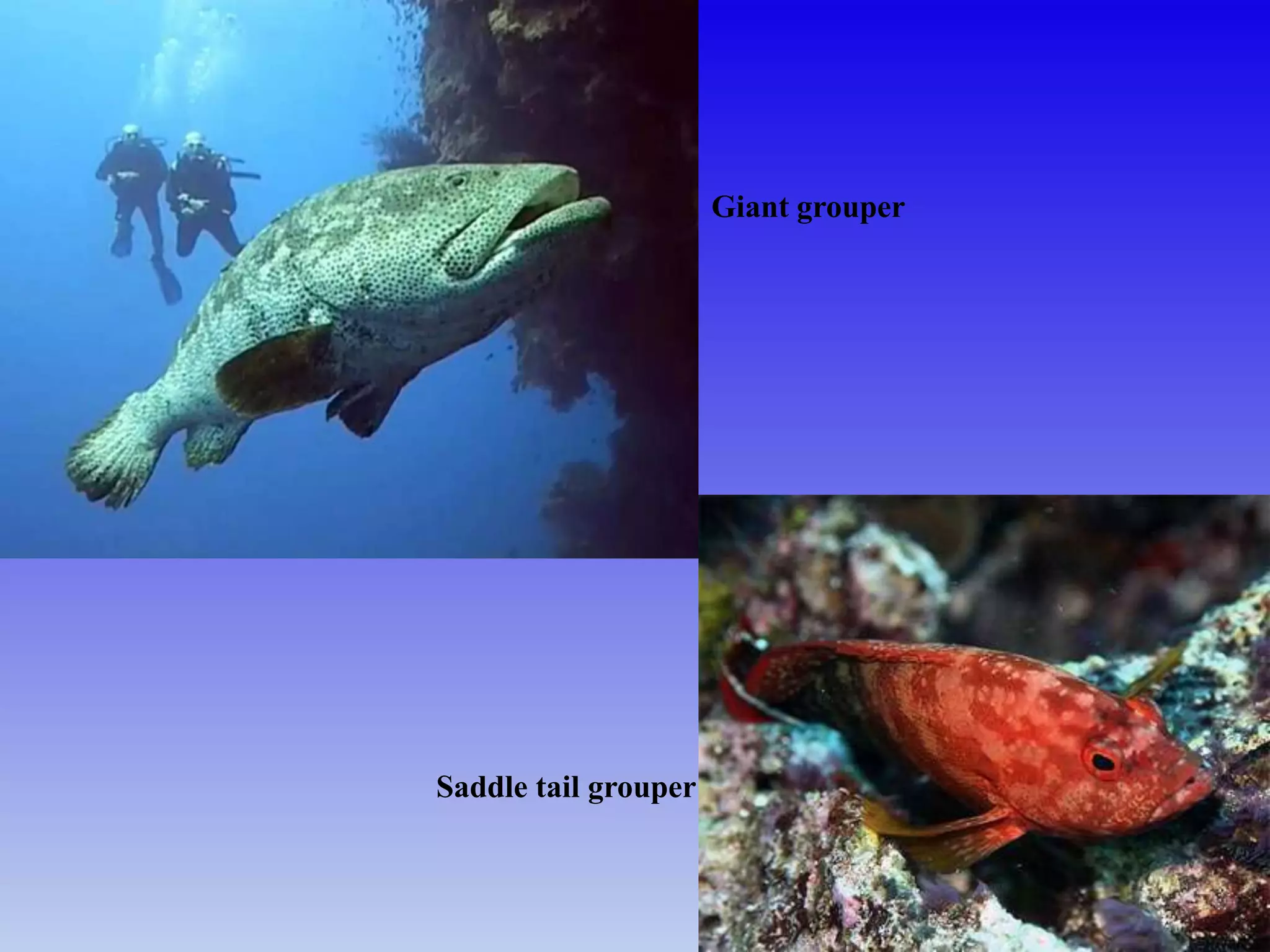Grouper are a family of fish found in marine environments around the world. They have stout bodies, large mouths, and come in a variety of colors depending on species. While not fast swimmers, some grouper species can grow very large, over a meter in length and 100 kg in weight. Grouper reproduce through both sex change and dedicated sexes depending on species, with larger males typically controlling harems. They are an important part of marine ecosystems, preying on other fish and invertebrates while also serving as prey for larger predators.




















